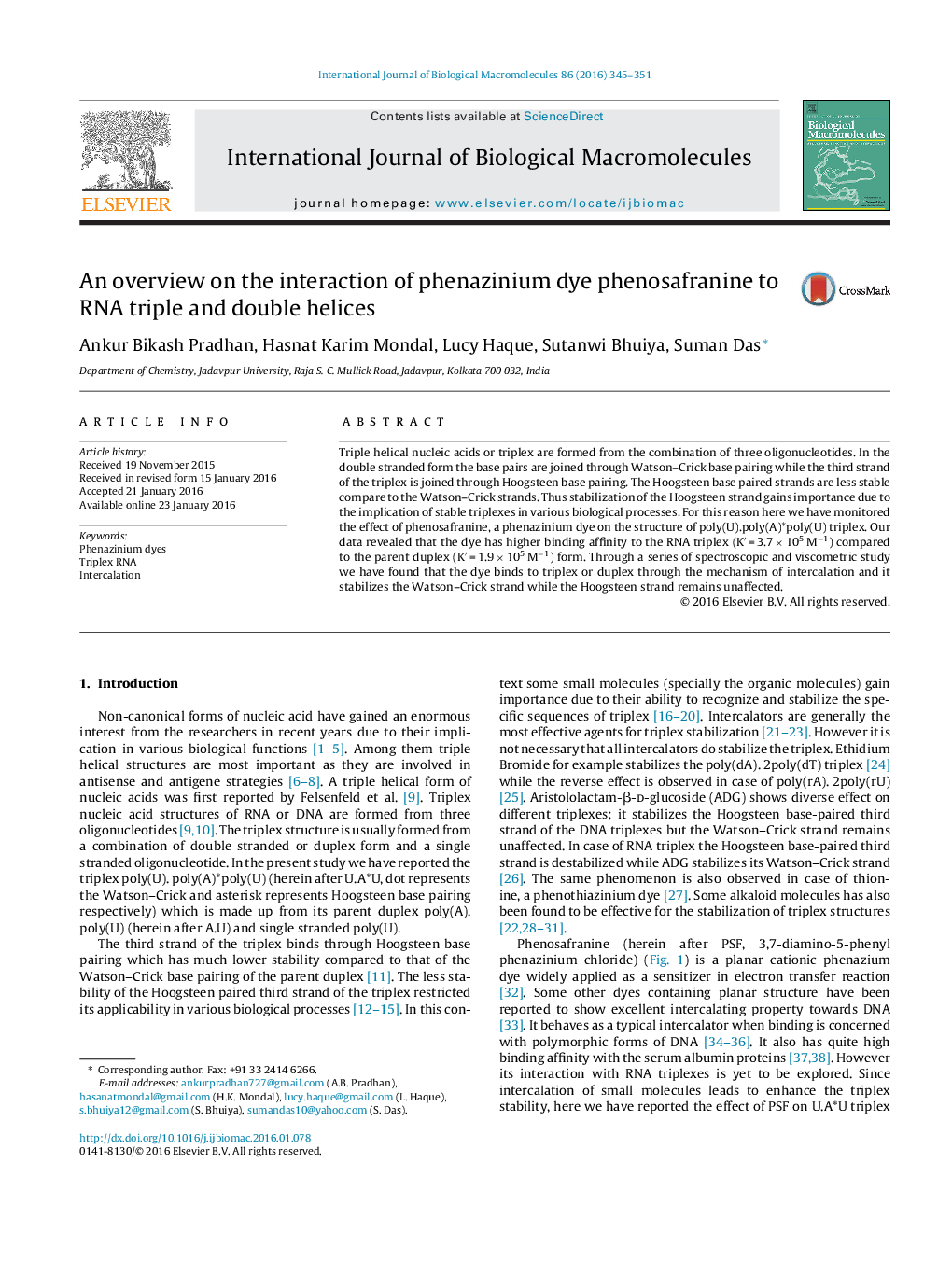| Article ID | Journal | Published Year | Pages | File Type |
|---|---|---|---|---|
| 1985912 | International Journal of Biological Macromolecules | 2016 | 7 Pages |
•The interaction of phenazinium dye PSF with U.A*U triplex and A.U duplex RNA were investigated using different spectroscopic and hydrodynamic techniques.•The binding affinity of PSF was found to be more in case of the triplex compared to the parent duplex form.•PSF binds through the mode of intercalation with both forms of RNA.•PSF stabilizes the Watson–Crick base paired strand while the Hoogsteen base paired strand remains unaffected.
Triple helical nucleic acids or triplex are formed from the combination of three oligonucleotides. In the double stranded form the base pairs are joined through Watson–Crick base pairing while the third strand of the triplex is joined through Hoogsteen base pairing. The Hoogsteen base paired strands are less stable compare to the Watson–Crick strands. Thus stabilization of the Hoogsteen strand gains importance due to the implication of stable triplexes in various biological processes. For this reason here we have monitored the effect of phenosafranine, a phenazinium dye on the structure of poly(U).poly(A)*poly(U) triplex. Our data revealed that the dye has higher binding affinity to the RNA triplex (K′ = 3.7 × 105 M−1) compared to the parent duplex (K′ = 1.9 × 105 M−1) form. Through a series of spectroscopic and viscometric study we have found that the dye binds to triplex or duplex through the mechanism of intercalation and it stabilizes the Watson–Crick strand while the Hoogsteen strand remains unaffected.
